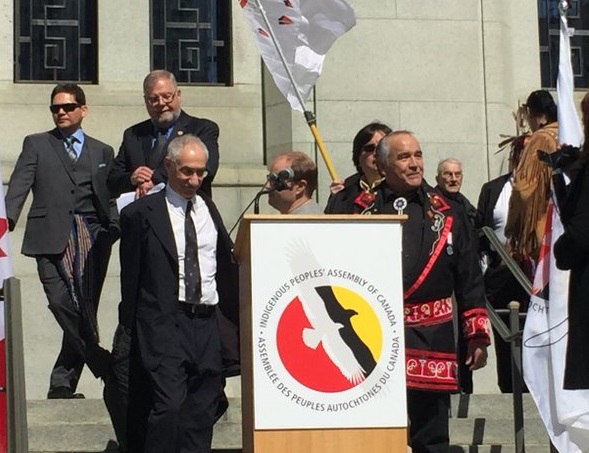A landmark Supreme Court ruling has paved the way for some 600,000 Metis and non-status aboriginal people with no affiliations to specific reserves to get out a jurisdictional limbo that has prevented them from accessing government services and pursuing land claims.
Canada’s top court yesterday issued a unanimous decision that tens of thousands of Metis and non-status Indians are now under the jurisdiction of the federal government. The SC held that non-status Indians and Métis are considered “Indians” under Section 91(24) of the 1867 Constitutional Act.
The ruling stems from the Daniels Vs. Canada case launched way back in 1999 by Metis leader Harry Daniels, then president of the Congress of Aboriginal Peoples; Lead Gardner, a non-status Anishinaabe woman; and Terry Journey, a non-status Mi’kmaq man. Daniels died in 2004.
“The Court’s decision marks the end of a historic 17-year legal journey and the beginning of a new day for the nearly 800,000 MNSI living off-reserve,” said Dwight Dorey, current national chief of CAP.
The ruling means that the federal government will now have responsibility for some 200,000 Metis and 400,000 non-status aboriginals who are not affiliated with any specific reserve.
Before this clarification, the court said, many indigenous communities were in a “jurisdictional wasteland with significant obvious disadvantaging consequences.”
It meant Metis and non-status Indians were barred from receiving significant funding programs and services.
“As a leader in Aboriginal politics for the past 37 years I have learned to be modest when it comes to predicting the future,” said Dorey when he addressed the media outside the Court today. “But I can say with confidence that today’s decision bodes well for the future of hundreds of thousands of disenfranchised Métis and non-status Indians, who can now move forward with a new sense of pride and purpose.”
Prime Minister Justin Trudeau said, “This is a landmark ruling that will have broad consequences and impacts. But I can guarantee you one thing: The path forward will be together as we move forward.”
The ruling also explained that the word Indian has two meanings:
- A broad term that includes all aboriginal people
- A narrower meaning that distinguishes First Nations from other groups
For purposes of defining federal jurisdiction, the court said, the broader meaning will be used.
The ruling, however, did not define which communities are Metis and which are non-status Indians, according to a report from the Toronto Star. It also did not determine who the ruling exactly applies to adding that this will be “decided on a case-by-case basis in the future.”

